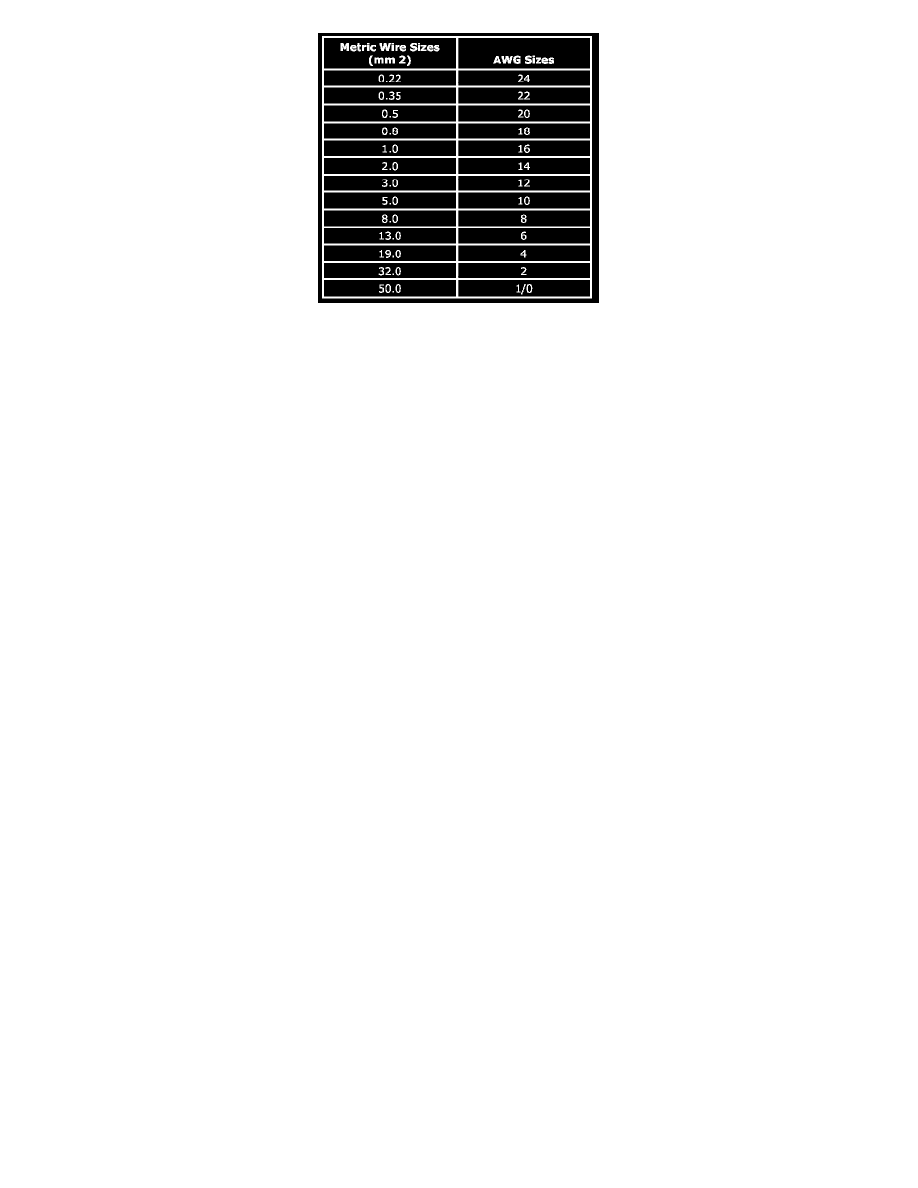XL-7 2WD V6-3.6L (2007)

Wire Size Conversion
Wire Size Conversion
Splicing Copper Wire Using Splice Clips
Splicing Copper Wire Using Splice Clips
NOTE: When making a splice in an area that may be exposed to moisture use a crimp and seal splice sleeve instead of a Splice Clip. Refer to [Splicing
Copper Wire Using Splice Sleeves. See: Wiring Repairs/Splicing Copper Wire Using Splice Sleeves
Special Tool
J-38125 Terminal Repair Kit
1. Open the harness.
^
If the harness is taped, remove the tape.
^
To avoid wiring insulation damage, use a sewing ripper in order to cut open the harness.
^
If the harness has a black plastic conduit, pull out the desired wire.
2. Cut the wire.
^
Cut as little wire off the harness as possible.
^
Ensure that each splice is at least 40 mm (1.5 in) away from other splices, harness branches and connectors. This helps prevent moisture from
bridging adjacent splices and causing damage.
3. Select the proper size and type of wire.
^
The wire must be of equal or greater size than the original (except fusible link).
^
The wire insulation must have the same or higher temperature rating.
-
Use general purpose insulation for areas that are not subject to high temperatures.
-
Use a cross-linked polyethylene insulated wire for areas where high temperatures are expected.
NOTE: Use cross-linked polyethylene wire to replace PVC, but do not replace cross-linked polyethylene with PVC.
4. Strip the insulation.
-
Select the correct size opening in the wire stripper or work down from the largest size.
-
Strip approximately 7.5 mm (5/16 in) of insulation from each wire to be spliced.
5. Select the proper clip to secure the splice. Follow the instructions in the J-38125 in order to determine the proper clip size crimp tool and anvil.
